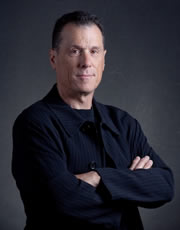 In the next year, the Art Department will be undertaking both a self-study and also an external accreditation study with the National Association of Schools of Art and Design (NASAD). As we do this, there is a great opportunity to ask some big questions of ourselves and to think deeply about what it means to be an art department at this moment in time.
In the next year, the Art Department will be undertaking both a self-study and also an external accreditation study with the National Association of Schools of Art and Design (NASAD). As we do this, there is a great opportunity to ask some big questions of ourselves and to think deeply about what it means to be an art department at this moment in time.
In the last 15 years, Art 21 has become a ubiquitous presence in contemporary art as a not-for-profit, multi-platform public educational resource. While it may be most well known for its PBS broadcast series on contemporary art, they are also an archive and activist voice for the value of art in post-millennial culture. Founded at the cusp of the new millennium to engage with the art of the 21st century, Art 21 described itself in the following way:
At the dawn of the 21st century, American artists are taking self-expression and the artistic process into uncharted territory. Today’s artists are engaging the world and their audiences in vital and surprising new ways. They use an enormous variety of media and draw on sources ranging from pop culture and politics to ethnic heritage, classical models, and deeply personal life experiences.
Perhaps this quote purposefully understated the coming paradigm shift that has taken place in the art world (it was written in 2001) but it does foreshadow the changes that were coming at the start of the new century. Now, 16 years into the new millennium, we can say with clarity, that the art world and the global culture that it resides in have inexorably changed; and institutions of higher education must be flexible and malleable in their approach to pedagogy and to the teaching of art specifically so that we accurately reflect the world as it is today. We need to be responsive to changes in the art/world.
Thus, I am asking you to be responsive as well. As we enter this period of self-study, we would like to know what you think an art department in the 21st century should look like. So, please email your concise statements to us at: artfrontdesk@education.wisc.edu
Please put “Art in the 21st Century” in the subject line.
Here are some questions to consider:
- What constituencies do/should we serve?
- How best can we serve them?
- How and what should we be teaching?
- What are the most evocative and relevant art practices that we should be supporting?
Please consider these and any other questions/issues that we should be thinking about now and in the future.
I hope to hear from you.
Douglas Rosenberg
Professor and Chair, Art Department
